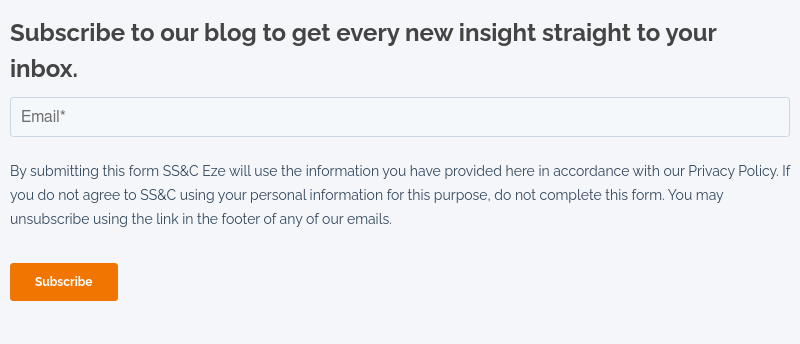Successful outsourcing involves more than managing processes and contracts.
Strategic outsourcing is an art that requires balancing what functions to outsource, which providers to partner with, and how to grow this partnership in alignment with the firm's strategic goals.
When done right, outsourcing enables investment firms to optimize operations, decrease overhead, and better manage risk. At the same time, this strategic move allows firms to focus more on core competencies and better capitalize on emerging opportunities.
In a new SS&C guide, we explore the nuances of successful outsourcing and how you can apply these partnerships to benefit your firm. Below, we give you a peek into what’s inside the guide.

The Forces Driving Today’s Demand for Outsourcing
Historically, outsourcing was primarily limited to functions like trading and fund administration. However, the pandemic accelerated its adoption, with firms now outsourcing a wide range of services, from compliance and regulatory reporting to data management and IT infrastructure.
Several factors are contributing to this growing demand for outsourcing, including profitability challenges, regulatory complexity, and talent shortages.
Why Investment Management Firms Outsource
In addition to helping firms meet today’s market challenges, outsourcing offers numerous other advantages, such as:
Choosing What to Outsource and What to Keep In-house
Although firms stand to gain many benefits by outsourcing, successfully doing so requires thoughtful consideration of the firm’s competitive advantages, lifecycle stage, and risk profile, as well as a thorough cost-benefit analysis.
Additionally, keep in mind that more outsourcing relationships are not always better.
As the number of outsourcing relationships grows, many firms find that managing a range of third-party vendors becomes complex and time-consuming.
Because of this, many firms choose to rationalize the number of outsourcing relationships they have. One way they do this is by working with vendors they already know and trust, like a technology provider.
This approach can enable faster onboarding, cost savings, and a single source for a holistic view of the firm’s operational landscape. Importantly, this option also provides a much-simplified experience compared to the effort of juggling many outsourcing relationships.
Selecting and Managing Outsourcing Partnerships
To ensure a successful and long-term outsourcing relationship, firms should conduct thorough due diligence, even when working with an existing partner, to ensure its outsourcing expertise and track record match your experience with the other solutions you currently employ.
To lay the groundwork for this type of long-lasting relationship it is important to establish expectations early. Governance mechanisms, like service level agreements (SLAs) and an internal oversight committee, can help clearly define the scope of the partnership and make sure your expectations are met throughout the lifetime of the relationship.
Another effective way of doing this is to foster open and transparent communication between your firm and your outsourcing provider so that any issues or concerns that arise can be addressed before they lead to consequences for the firm.
By carefully selecting the right outsourcing provider and effectively managing the relationship, investment firms can enhance operations, capitalize on competitive advantages, and get ahead.
Dive Deeper: Building a Successful, Sustainable Outsourcing Infrastructure
In the complete outsourcing guide, learn more about building successful, sustainable outsourcing relationships, including 9 characteristics to look out for in an outsourcing provider.


